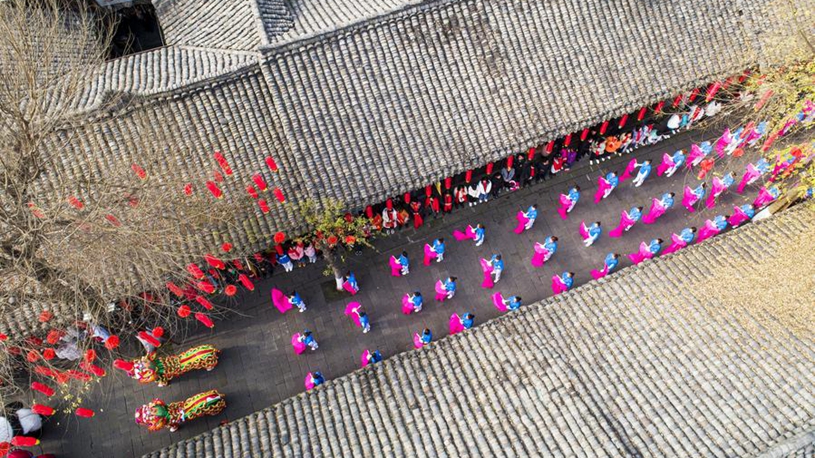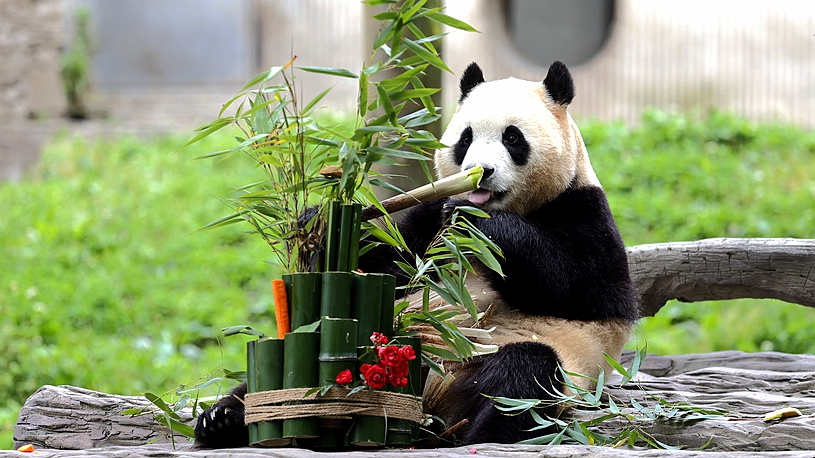HAIKOU, June 13 (Xinhua) -- Sitting on the floor, Liu Xianglan holds the traditional hand-loom in position. With the aid of long sticks, she begins weaving, passing colorful threads back and forth to create the delicate patterns of the Li brocade.
The Li brocade is a traditional textile of the Li ethnic group in the southern island province of Hainan. Dubbed the "living fossil" of the textile industry, it boasts a history of more than 3,000 years. The entire process of the Li brocade tradition includes spinning, dyeing, weaving and embroidery, and was included in the World Intangible Cultural Heritage list in 2009.
Liu, 55, still remembers the first time her mom taught her how to weave, more than four decades ago.
"I was fascinated by the bright colors and vivid patterns of the brocade my mom produced, and hoped that someday I could weave those beautiful textiles myself," recalled the woman from the city of Wuzhishan, Hainan. She started learning the craft at the age of 13.
While pursuing her dream, Liu found that the number of people with this skill was falling, and only the elderly people were adept at the craft. "We shouldn't let this traditional skill get lost," she said.
In 2013, she established a center in her village dedicated to the study and practice of Li brocade weaving, with local women encouraged to join the effort of preserving this intangible cultural heritage.
The following year, she started her own company selling Li brocade products, including clothes, tapestries and bed runners, among other items.
"Many of our staff used to be farmers toiling in the fields," Liu said. "Now they have inherited these traditional skills, while boosting their incomes and living standards."
The company currently has 63 workers, 28 of whom were from impoverished families but have now shaken off poverty.
In her spare time, Liu also teaches at some vocational and primary schools. "If the children can learn about the traditional culture at an early age, it will help with continuing the inheritance of Li brocade skills," she said.
While Liu is endeavoring to preserve the tradition, 31-year-old Chen Mengli is aiming to revitalize Li brocade through innovation.
Growing up in Wuzhishan, the woman from the Li ethnic minority studied textiles technology and trade at university, before returning to her hometown to start a studio in 2014. The studio was named Bulibushe, which literally means "the house of Li brocade" but sounds like "never leave or forsake" in Mandarin.
To appeal to the younger generation, she integrated Li brocade elements into fashion designs, while keeping the prices more affordable. For instance, she has designed bags and scarves that have proved popular with young people. On Douyin, the Chinese version of TikTok, one video featuring a fashion show of Li brocade-themed dresses has attracted numerous likes.
Her studio has launched more than 100 types of creative cultural products, such as umbrellas and accessories. "The combination of Li brocade elements and current fashion trends not only retains the precious cultural heritage of our ethnic group, but also enhances the vitality of the art."
According to Liu Liting, head of Wuzhishan's cultural center, there are a total of 64 city-level inheritors of Li brocade weaving. To promote the traditional technique, the city has supported training in various forms.
In recent years, Hainan has invested heavily in opening training institutes to teach the techniques of Li brocade to local people. Since 2012, Li brocade has been introduced as a course in primary and secondary schools in the province. Local authorities have also formulated a raft of measures to strengthen the systematic protection and innovative development of Li brocade, striving to help the traditional skills survive over time.
Besides, Li brocade has appeared in the Boao Forum for Asia Annual Conference for many years in a row and has been presented as a national gift to guests at home and abroad.
"We have collaborated with an Italian institute, and the foreign teachers from there gave us lessons on the latest fashion ideas and trends," she said, adding that without innovation to keep the Li brocade in step with current fashion trends, it would be difficult for the traditional art to thrive.
Wuzhishan has sent a total of 78 people in six batches to countries including Italy, Singapore and Japan for Li brocade art demonstrations. Liu Xianglan was one of them, and looking back, she is still excited by the experience.
"Cultural exchanges like this have inspired me a lot," she said.
"My life was changed due to Li brocade," added the woman. "I will try my best to promote the skills, so as to ensure more people understand the Li culture and take the cultural heritage further." ■











